Mounting in holes
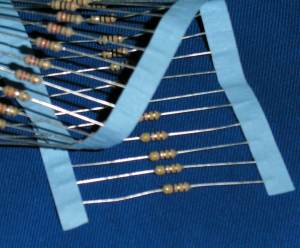 Resistors for mounting in tape
Resistors for mounting in tape
 Resistors are installed in the breadboard
Hole mounting, end-to-end mounting, output mounting, or mounting TNT components
(eng. Through-hole Technology, THT - hole mounting technology) -
technology for installing output components, in which the outputs of the components are mounted in the through holes of the printed circuit board.
Technology is gradually giving way to surface mounting,
however, it continues to be used in products of high electrical power and at high mechanical loads.
Resistors are installed in the breadboard
Hole mounting, end-to-end mounting, output mounting, or mounting TNT components
(eng. Through-hole Technology, THT - hole mounting technology) -
technology for installing output components, in which the outputs of the components are mounted in the through holes of the printed circuit board.
Technology is gradually giving way to surface mounting,
however, it continues to be used in products of high electrical power and at high mechanical loads.
THT resistors are also convenient for use in breadboard designs.
SMD (planar) mounting
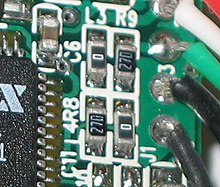 Four SMD resistors and a capacitor
Surface mounting is the most common in modern electronics. It has many advantages:
Four SMD resistors and a capacitor
Surface mounting is the most common in modern electronics. It has many advantages:
- miniature component sizes
- less parasitic inductance (compared to hole mounting) due to shorter component leads
- the ability to use automatic installation of components on the board (SMD Pick & place machine)
Sizes of SMD resistors
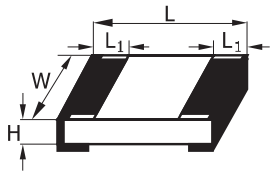
| Size | L, mm | W, mm | H, mm | L1, mm | Pnom, W | Uwork, V | Umax, V |
|---|---|---|---|---|---|---|---|
| 0201 | 0.6 | 0.3 | 0.23 | 0.13 | 0,05 | 12 | 50 |
| 0402 | 1.0 | 0.5 | 0.35 | 0.25 | 0,062 | 50 | 100 |
| 0603 | 1.6 | 0.8 | 0.45 | 0.3 | 0,1 | 50 | 100 |
| 0805 | 2.0 | 1.2 | 0.4 | 0.4 | 0,125 | 150 | 200 |
| 1206 | 3.2 | 1.6 | 0.5 | 0.5 | 0,25 | 200 | 400 |
| 2010 | 5.0 | 2.5 | 0.55 | 0.5 | 0,75 | 200 | 400 |
| 2512 | 6.35 | 3.2 | 0.55 | 0.5 | 1,0 | 200 | 400 |
Surface Mount
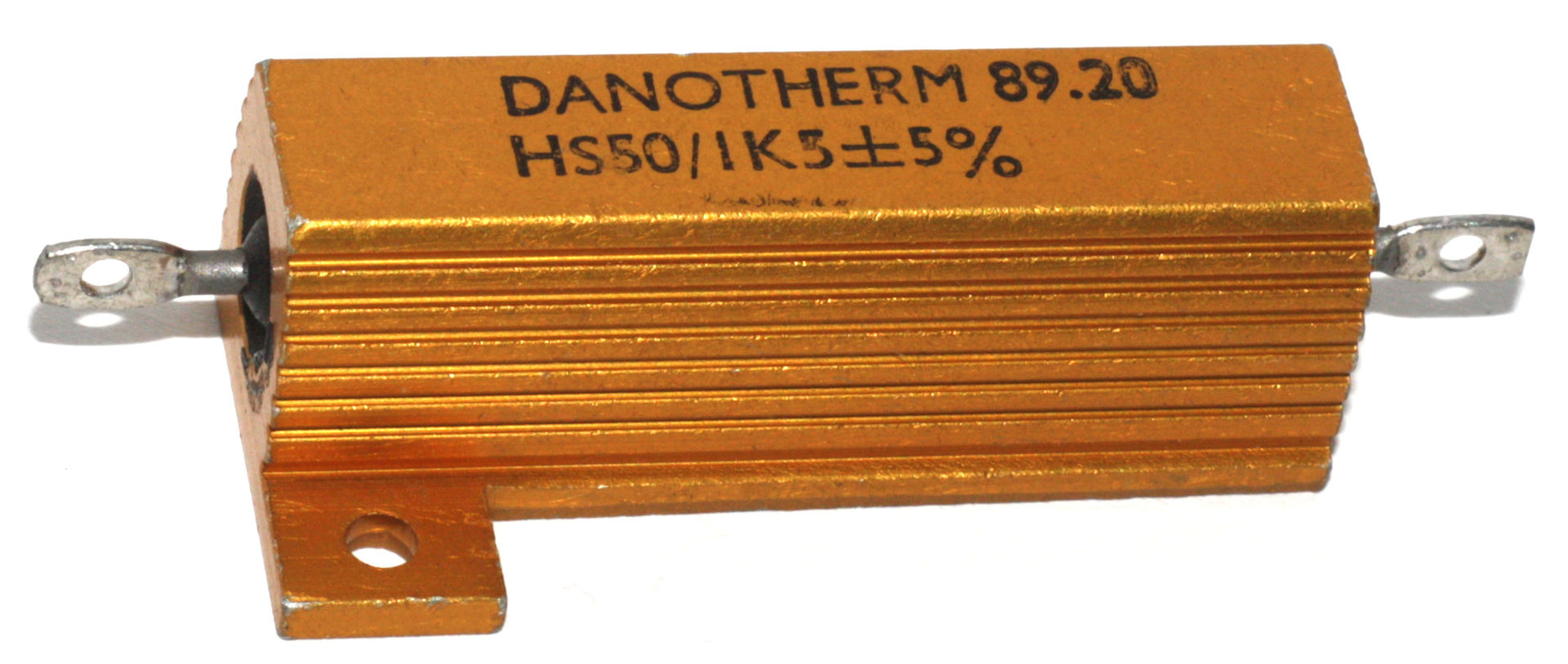 50 W resistor Danotherm HS50
50 W resistor Danotherm HS50
 7.5 and 10 W PEV resistors manufactured in the USSR
High power resistors are typically available in housings designed for on-board mounting.
The connection is carried out by soldering or crimping the wire, and the case has fasteners for mounting on the chassis
or heat sink.
7.5 and 10 W PEV resistors manufactured in the USSR
High power resistors are typically available in housings designed for on-board mounting.
The connection is carried out by soldering or crimping the wire, and the case has fasteners for mounting on the chassis
or heat sink.
The photos show a modern powerful 50 W resistor with mounting tabs (left),
and Soviet resistors PEV with a power of 7.5 and 10 W (right), which were produced in the form of hollow cylinders with screw mounting,
passing along the central axis of the resistor.
Other species
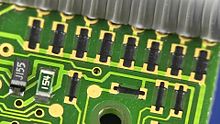 Carbon resistors can be printed directly onto the circuit board using SMD pins.
The photo shows an example on a Psion II Organizer handheld board released in 1989.
Carbon resistors can be printed directly onto the circuit board using SMD pins.
The photo shows an example on a Psion II Organizer handheld board released in 1989.